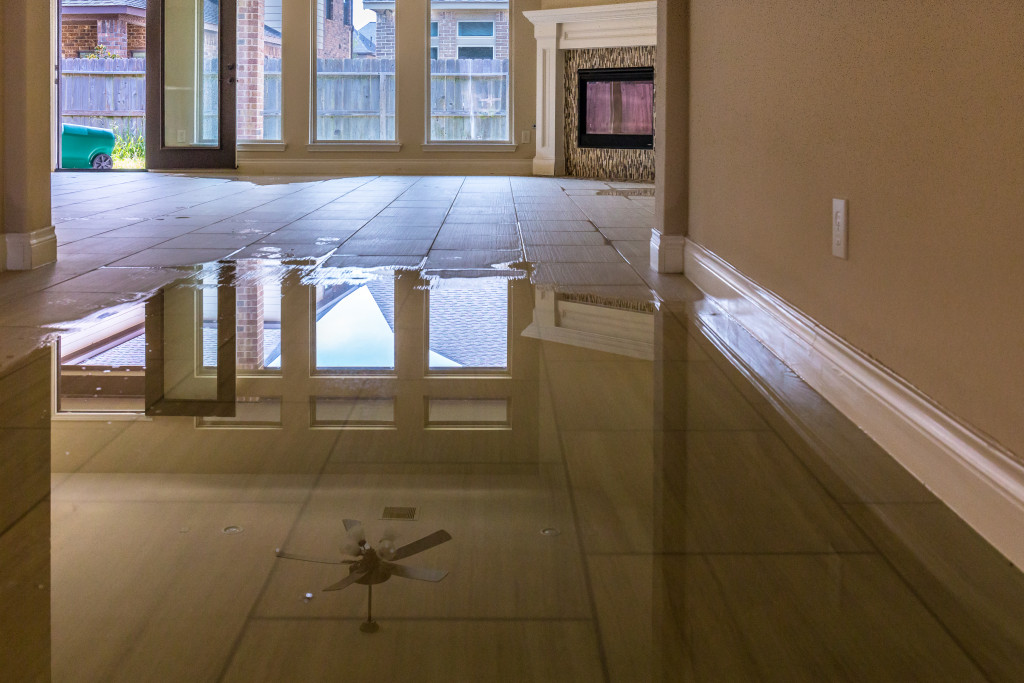- Inspect gutters and downspouts regularly to prevent water damage.
- Divert water away from the home’s foundation with splash blocks or extension pipes.
- Check appliances for leaks or other water damage.
- Insulate pipes to avoid freezing in colder months.
- Utilize dewatering methods to reduce the risk of flooding and runoff.
Preventing water damage in your home is one of the most important steps to ensure your house’s long-term health and safety. Water damage is expensive to repair and poses serious risks to your overall health. This guide will provide essential tips on protecting your home from water damage. With these simple tips, you can keep yourself and your family safe while saving money!
1. Inspect Gutters and Downspouts Regularly
Gutters and downspouts are important to protecting your home against water damage. Clogged gutters can cause water to pool near the foundation, leading to costly repairs and health hazards. To avoid this, inspect your gutters regularly for debris and clean them out as needed. If you live in an area prone to heavy rain or snowfall, consider installing gutter guards to prevent clogs.
2. Divert Water Away From Home’s Foundation
Once you have cleared out the gutters, it’s time to take steps to divert water away from your home’s foundation. This can be done by redirecting downspouts away from the house with a splash block or extension pipes. You should also check for low spots around the perimeter of your property, where standing water could gather and seep into the foundation walls.
3. Check Appliances for Leaks or Other Water Damage

Another important step in avoiding water damage is to check your appliances regularly. Inspect the hoses and connections to and from your washer, refrigerator, dishwasher, and other fixtures. Look out for signs of leakage or corrosion that could indicate a problem. It’s also a good idea to get into the habit of checking underneath these appliances regularly.
If you notice any of the following warning signs, contact a plumber immediately:
- Leaking hoses or connections
- Corrosion on pipes or fittings
- Condensation in areas where there shouldn’t be
- Any evidence of water pooling or seeping around the appliance
4. Insulate Pipes To Avoid Freezing In Colder Months
If you live in an area with cold winters, you must insulate any exposed pipes before the temperatures drop too low. This will help prevent freezing and bursting pipes that can cause significant water damage. For added protection, consider installing pipe insulation sleeves or wrapping pipes in foam and securing them with duct tape.
Here’s how to insulate your pipes:
Gather Your Materials
Before you begin, gathering the necessary materials for insulating your pipes is important. You will need pipe insulation sleeves, foam, scissors, and duct tape. You can purchase these items from a hardware store or online retailer if needed.
Measure and Cut the Insulation
Once your materials are ready, measure each pipe that needs to be insulated and cut enough insulation material to cover it completely. Make sure to leave extra room on either end of the sleeve so that it can fit securely around the pipe without any gaps. If you are using foam instead of pre-made sleeves, cut out pieces large enough to wrap around your pipes.
Install the Insulation

Once you’ve cut your insulation material, it’s time to install it on your pipes. Slide the pre-made sleeves onto each pipe or wrap the foam around each one and secure it with duct tape. Ensure all the seams are tightly sealed so that heat cannot escape through any gaps.
Check for Leaks
After you’ve installed your insulation, check each pipe for any leaks or damages that could lead to future water damage. If everything looks good, then you can rest assured knowing that your pipes are now insulated against cold weather and freezing temperatures!
5. Utilize Dewatering
Dewatering is the process of removing water from an area to prevent flooding. This can be done using pumps, wells, drains, or a combination of methods. If you live in an area prone to flooding, utilizing dewatering can help reduce the risk of damage caused by water accumulation. It can also help maintain a healthy home environment, limiting runoff or groundwater pollution effects.
Closing Thoughts
Water damage is one of the most costly problems that homeowners face. Following these simple tips can keep your home safe and dry while saving money! Regularly inspect gutters and downspouts, divert water away from your home’s foundation, check appliances for leaks and other water damage, insulate pipes to avoid freezing in colder months, and utilize dewatering measures when necessary. You can keep your family safe while avoiding costly repairs with the right steps!

















